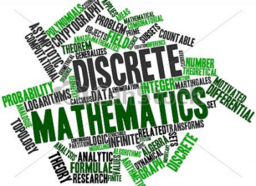Esquema
Discrete Math
ABSTRACT 1
GeoGebra-Integrated Professional Development of Future Math Teachers within Discrete Mathematics Course
Valentyna Pikalova, G.S. Scovoroda Kharkiv National Pedagogical University, Ukraine
Discrete Mathematics and adjacent disciplines are studied in all universities, where specialists in the field of programming, mathematics, as well as economic, technical and humanitarian areas are trained. Traditionally, discrete mathematics includes following topics such as set theory, mathematical logic, combinatorics, graph theory, etc. GeoGebra provides a wide range of instruments, which allow teacher to expand the range of tasks, increase their complexity, foster research component, create dynamic demonstration to explore mathematical objects with multiple representation.
The complex of interactive dynamic demonstrations designed in GeoGebra to support discrete mathematics course for future teachers (pre-service) of mathematics is considered. Complex focuses on four types of demonstrations: teaching and learning basic concepts, stages of theorem proving, implementation of well-known algorithms from graph theory, the real-life problem-solving. This complex was created within the framework of future math teachers training. The course assignment involves student project on creating dynamic demonstration.
ABSTRACT 2
The computer simulation of SDN routing algorithm
Liliia Bodnar, South Ukrainian National Pedagogical University named after K D Ushinsky
Kateryna Shulakova, Odessa National Academy of Telecommunications named after A.S. Popov
In this article, the authors review how the management and transmission of SDN elements can open new horizons for innovation.
SDN is an architectural concept and a marketing term that combines a plurality of closed solutions building and network management. Existing simulation methods were reviewed for such networks.
The mathematical software of environment GeoGebra can be offered as a simulation system of SDN routing algorithm.
In a demonstration of Dijkstra's algorithm for different network models can clearly see the benefits that can be achieved using this algorithm in SDN networks.
This research is aimed at simplifying network configuration, and as a result of reducing the cost of network equipment when not changing the technical specifications of nodes.

Tabla de contenidos
Introduction
Set Theory
Graph Theory
- Adjacent Matrix
- Generate Graph
- Planar Graphs
- Nonplanar Graphs
- Euler Graph
- Hamilton Graph
- Petersen Graph
- Transformation of maps into graphs.
- Four colour theorem
- Real-life Problem. Store Chemicals in Warehouse
- Same Idea. Zoo Problem
- Real-life problem. Timetable
- Chromatic polynomials
- Theorem. Chromatic Polynomial
- Discrete Command
- The routing algorithm in traditional networks
Combinatorics